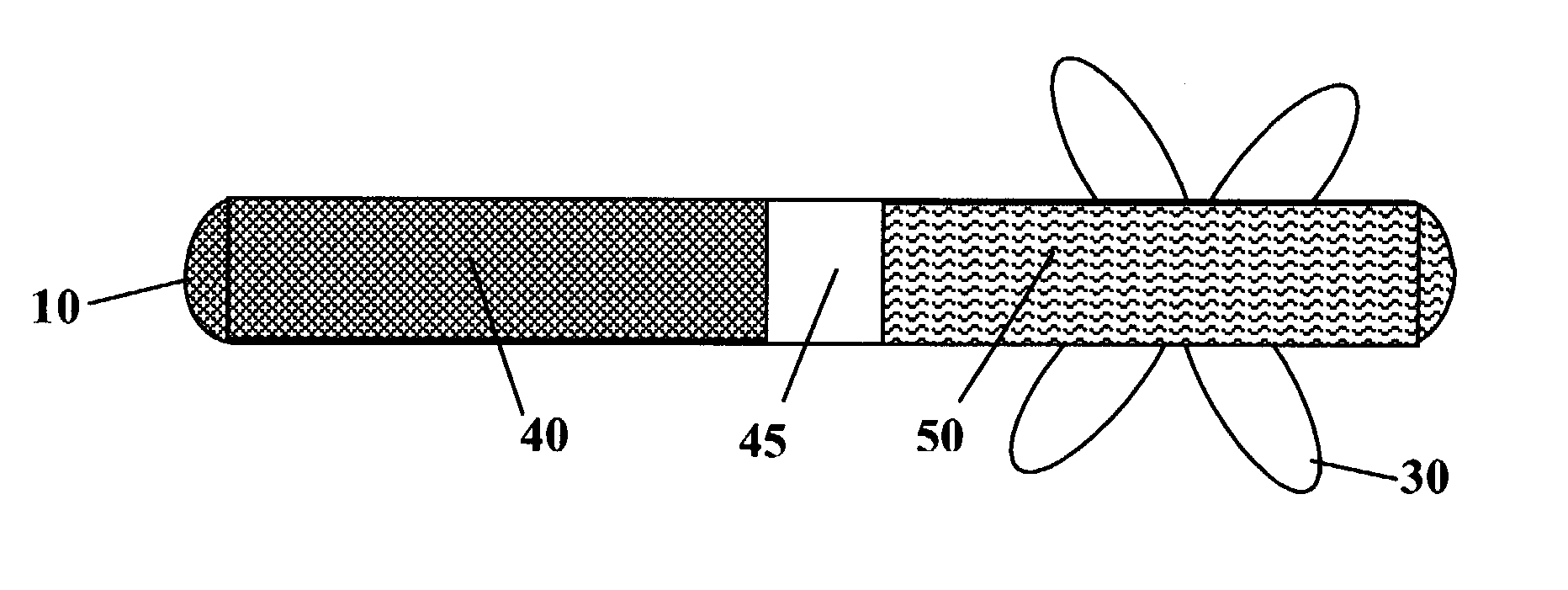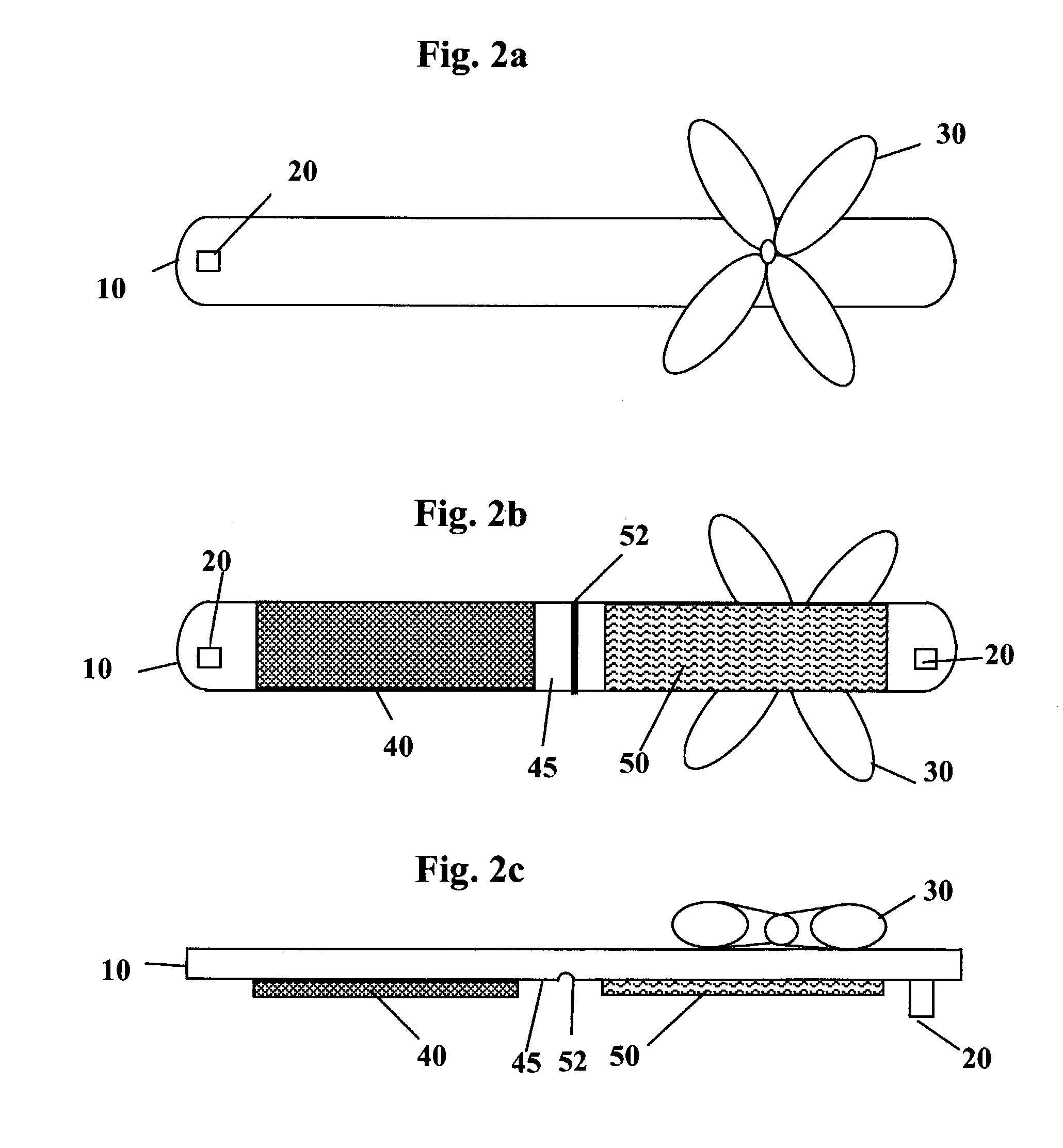Child's barrette and method of application
a technology for holding hair and hair, applied in the field of holding hair, can solve the problems of not being able to hold a child's fine hair in a comfortable manner, the panel is not well suited for holding a child's fine hair, and the child is in extreme discomfort, so as to achieve the effect of reducing the force in the middle of the flexible hook and loop, reducing the force, and reducing the for
- Summary
- Abstract
- Description
- Claims
- Application Information
AI Technical Summary
Benefits of technology
Problems solved by technology
Method used
Image
Examples
first embodiment
[0035]In FIGS. 1a and 1b there is illustrated a barrette in accordance with the invention. The barrette 10 comprises a flat flexible strip of flexible material having a length ranging from about one inch to about six inches, and a width ranging from about one-quarter of an inch to one inch. These dimensional ranges are critical to the application for which the invention is intended. Preferably, the length of the flat flexible strip is at least twice its width. The material of which the flat flexible strip is constituted may be fabric, elastomer or plastic, or a composite of these or other materials. It is important that the material of the flexible strip be sufficiently flexible that the barrette may be readily folded about a line perpendicular to its length with ease. Preferably, the barrette is a plastic such as polyethylene, polypropylene or flexible vinyl. Complementary opposable releasable fastening means of the hook and loop type known as Velcro are fixedly attached to the bot...
second embodiment
[0038]FIGS. 2a, 2b and 2c illustrate a barrette in accordance with the invention. This embodiment consists of the same elements as that shown in FIGS. 1a and 1b; but additionally comprises an opposable releasable snap fastener 20 located at the distal ends of the barrette. Use of snap fastener 20 provides further assurance that closure of the barrette is secure. As illustrated by FIGS. 2a through 2c, the fastener is of the post and socket snap variety. This fastener design is preferred since it is easily and economically molded into the flexible strip. It will be obvious to one skilled in the art that other snap fastener designs may be employed without departing from the scope of the invention. A central depression or groove 52 is provided, as shown in FIGS. 2b and 2c, to assist bending of the flexible strip so that the snap fastener attaches properly and reliably.
[0039]As shown in FIGS. 2a and 2b, the top and bottom edges along the length of the barrette are substantially linear.
PUM
 Login to View More
Login to View More Abstract
Description
Claims
Application Information
 Login to View More
Login to View More - R&D
- Intellectual Property
- Life Sciences
- Materials
- Tech Scout
- Unparalleled Data Quality
- Higher Quality Content
- 60% Fewer Hallucinations
Browse by: Latest US Patents, China's latest patents, Technical Efficacy Thesaurus, Application Domain, Technology Topic, Popular Technical Reports.
© 2025 PatSnap. All rights reserved.Legal|Privacy policy|Modern Slavery Act Transparency Statement|Sitemap|About US| Contact US: help@patsnap.com



